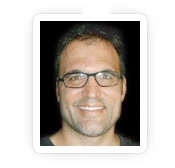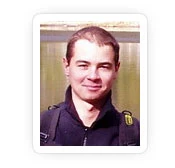The Gastrocnemius/Soleus Complex in Yoga

The gastrocnemius and soleus muscles form the triceps surae or gastrocnemius/soleus complex. The soleus muscle originates from the head and neck of the fibula bone and, via a tendinous arch, the soleal line at the back of the tibia bone. The gastrocnemius has two heads; one originates from the medial epicondyle of the femur and the other from the lateral epicondyle. The soleus and gastrocnemius attach to the calcaneus (heel bone) via the Achilles tendon (figure 1).
(Figure 1- left: The gastrocnemius and soleus muscles.)
Both muscles act to flex the ankle and invert the subtalar joint. The gastrocnemius, because it crosses the knee, also acts as a knee flexor. Since the two muscles act to plantarflex the ankle, dorsiflexing the ankle joint acts to stretch them. Figure 2 below illustrates the relationship between these muscles in the cross-section.
(Figure 2-above: The gastrocnemius and soleus muscles in cross-section.)
Concerning the soleus: these muscles help to propel blood and fluids back up out of the legs for proper circulation of your legs. This is because muscle contraction augments the flow of blood and lymphatic fluid toward the heart via a system of one-way valves within the vessels (figure 3).
 (Figure 3 (Right): One-way valves in veins.)
(Figure 3 (Right): One-way valves in veins.)
One helpful tip is to try placing a slight bend in the knee during Downward-Facing Dog pose to release the gastrocnemius and focus the stretch more deeply on the soleus muscle.
You can also release the gastrocnemius with a series of stretches in Downward-Facing Dog pose. The Daily Bandha post on Hanumanasana illustrates the effect of several short-duration (less than 30 seconds) stretches on muscle length.
Figure 4 below illustrates the sequential release of the gastrocnemius by bending the knee, using the hands to dorsiflex the ankle, and then engaging the quads to straighten the knee. A similar sequence can be applied to Downward-Facing Dog.
(Figure 4: 1) bend the knee to release the gastrocnemius; 2) dorsiflex the ankle to stretch the soleus; 3) contract the quadriceps to extend the knee and stretch the gastrocnemius.)
The Silfverskiöld test also illustrates the rationale for increased ankle dorsiflexion with the knee bent. In orthopedics, we use this test to differentiate a tight gastrocnemius from an Achilles tendon contracture by dorsiflexing the ankle with the knee straight and then with the knee flexed. Increased ankle dorsiflexion with the knee bent indicates that the limitation of motion at the ankle is coming from the gastrocnemius.
Finally, figure 5 illustrates the connection between the gastrocnemius/soleus complex and the plantar fascia. Learn more in the blog post, “Plantar Fasciitis, Myofascial Connections and Yoga.”
(Figure 5: The plantar fascia and gastrocnemius/soleus complex)
Printed with permission from TheDailyBandha.com

Author Ray Long MD FRCSC is a board-certified orthopedic surgeon and the founder of Bandha Yoga. Ray graduated from The University of Michigan Medical School with post-graduate training at Cornell University, McGill University, The University of Montreal and Florida Orthopedic Institute. He has studied hatha yoga for over twenty years, training extensively with B.K.S. Iyengar and other leading yoga masters.
 3D Graphic Designer / Illustrator Chris Macivor has been involved in the field of digital content creation for well over ten years. He is a graduate of Etobicoke School of the Arts, Sheridan College, and Seneca College. Chris considers himself equally artistic and technical. As such, his work has spanned many genres, from film and television to video games and underwater imagery.
3D Graphic Designer / Illustrator Chris Macivor has been involved in the field of digital content creation for well over ten years. He is a graduate of Etobicoke School of the Arts, Sheridan College, and Seneca College. Chris considers himself equally artistic and technical. As such, his work has spanned many genres, from film and television to video games and underwater imagery.







